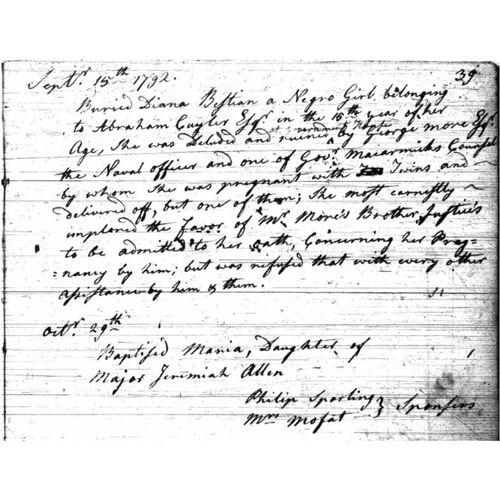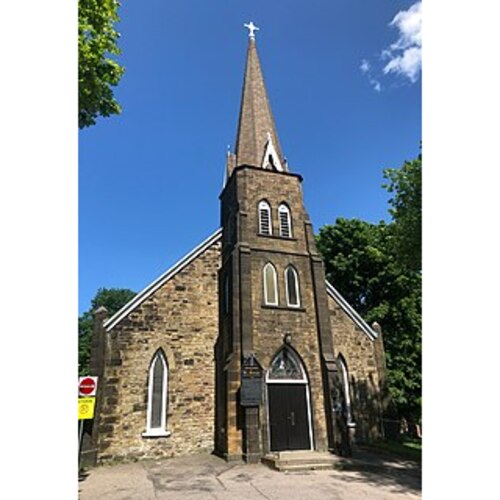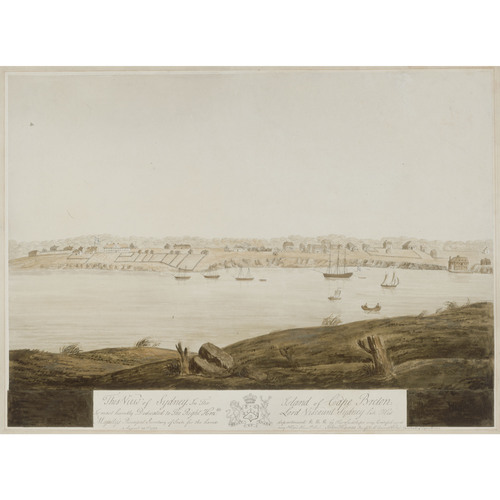![Burial record of Diana Bustian [Bestian] - Nova Scotia Archives Original title: Burial record of Diana Bustian [Bestian] - Nova Scotia Archives](/bioimages/w600.15381.jpg)
Source: Link
BESTIAN, DIANA, enslaved Black female, b. probably 1777, likely in Albany, N.Y.; she had a child whose twin did not survive; d. 1792 and was buried in St George’s Anglican Church cemetery in Sydney, N.S.
Early years
Diana Bestian was born during the early years of the American Revolutionary War. She was enslaved by Abraham Cornelius Cuyler*, who came from a prominent New York family and had been mayor of Albany. An active United Empire Loyalist, he fought in numerous engagements after 1776 and moved his family to Quebec in 1782. It is not known how many slaves he kept, though his loyalist claim included reference to individuals valued at £200. Whether members of Diana Bestian’s family were among this group is uncertain. More certain is that Bestian accompanied Cuyler’s household to the colony that year.
In Quebec City, Cuyler was appointed inspector of refugee loyalists. He devised a settlement plan for Cape Breton and then travelled to England in late 1783 to seek approval for the scheme. The Privy Council agreed to his proposal to establish Cape Breton as a colony separate from Nova Scotia. Despite this achievement, the expected number of loyalist settlers did not materialize and the British settlements in Cape Breton struggled.
Cape Breton
Bestian was probably taken to Cape Breton about 1784, when Cuyler arrived in the new colony. He helped found the town of Sydney, where he made his home. He was also given a 500-acre farm located across the harbour, which he called Yorkfields. Bestian would have been no more than ten years of age at this time and may have carried out domestic tasks in Cuyler’s household, perhaps also working on his farm, which was typical labour for female slaves in Nova Scotia and New Brunswick [see Lydia Jackson]. At Sydney, Cuyler served on the new colony’s Executive Council, led first by Governor Joseph Frederick Wallet DesBarres* and then by William Macarmick*.
“Deluded and ruined”
In late 1791 or early 1792, when she was about 14 or 15, Diana Bestian became pregnant. The father was George More (Moore), a naval officer and member of the Executive Council. He was nearly 30 years her senior. It seems likely that she was raped; her death record notes that she was left “deluded and ruined” by the sexual encounter at Sydney’s Government House. At some point between then and mid September 1792, Bestian “earnestly implored” the council that she “be admitted to her oath [allowed to give sworn testimony] concerning her pregnancy” by More. She was refused this and “every other assistance.” Diana Bestian died in 1792, possibly in childbirth. Only one of the twins she was carrying was delivered alive, and the child’s fate is unknown.
The only known record of Bestian’s existence is that of her burial on 15 September, written by the Reverend Ranna Cossit*, minister at St George’s Anglican Church in Sydney. This scarcity of documentation is not unusual. At least 1,500 enslaved people (and possibly as many as 2,500; frequent re-enslavement and escape make it impossible to determine an exact number) were brought to the Maritimes by white loyalists, and the names of most are now unknown [see Name Unrecorded]. They lived and laboured without statutory recognition of their slavery, and sexual relations between enslaved women and white masters were usually exploitative and coercive.
Although Bestian was unable to hold More accountable, her plea to the Executive Council and her self-assertion before members of Cape Breton’s elite demonstrate a refusal to accept her fate. Her unusually detailed burial record, which notes her enslavement, her encounter with More, and her efforts to seek assistance, suggest its author sympathized with her plight. Perhaps it also acknowledges that Bestian did not consent to the sexual encounter – a chilling example of the dangers faced by enslaved Black girls and women in the Maritimes, colonial Canada, and the Atlantic world.
Library and Arch. Can. (Ottawa), MG11-CO220CapeBretonB, vol.7 (Minutes of Executive Council, Cape Breton B, 1790–93), 6 Feb. 1792 (copy at heritage.canadiana.ca/view/oocihm.lac_reel_h1989, images 341–49). N.S. Arch. (Halifax), St George’s Anglican Church, Sydney, 1785–1827, p.39 (Diana Bustian [sic] burial record) (copy at archives.novascotia.ca/Africanns/archives/?ID=49). Cape Breton Hist. Soc., Some papers and records of the society, 1928 to 1932, no.1 (Sydney, N.S., 1932). Afua Cooper, “‘Deluded and ruined’: Diana Bastian – enslaved African Canadian teenager and white male privilege,” Brock Education (St Catharines, Ont.), 27 (2017–18), no.1: 26–37. H. A. Whitfield, Biographical dictionary of enslaved Black people in the Maritimes (Toronto, 2022); “The struggle over slavery in the Maritime colonies,” Acadiensis, 41 (2012), no.2: 17–44.
Cite This Article
Harvey Amani Whitfield, “BESTIAN, DIANA,” in Dictionary of Canadian Biography, vol. 4, University of Toronto/Université Laval, 2003–, accessed January 20, 2026, https://www.biographi.ca/en/bio/bestian_diana_4E.html.
The citation above shows the format for footnotes and endnotes according to the Chicago manual of style (16th edition). Information to be used in other citation formats:
| Permalink: | https://www.biographi.ca/en/bio/bestian_diana_4E.html |
| Author of Article: | Harvey Amani Whitfield |
| Title of Article: | BESTIAN, DIANA |
| Publication Name: | Dictionary of Canadian Biography, vol. 4 |
| Publisher: | University of Toronto/Université Laval |
| Year of publication: | 2024 |
| Year of revision: | 2024 |
| Access Date: | January 20, 2026 |





